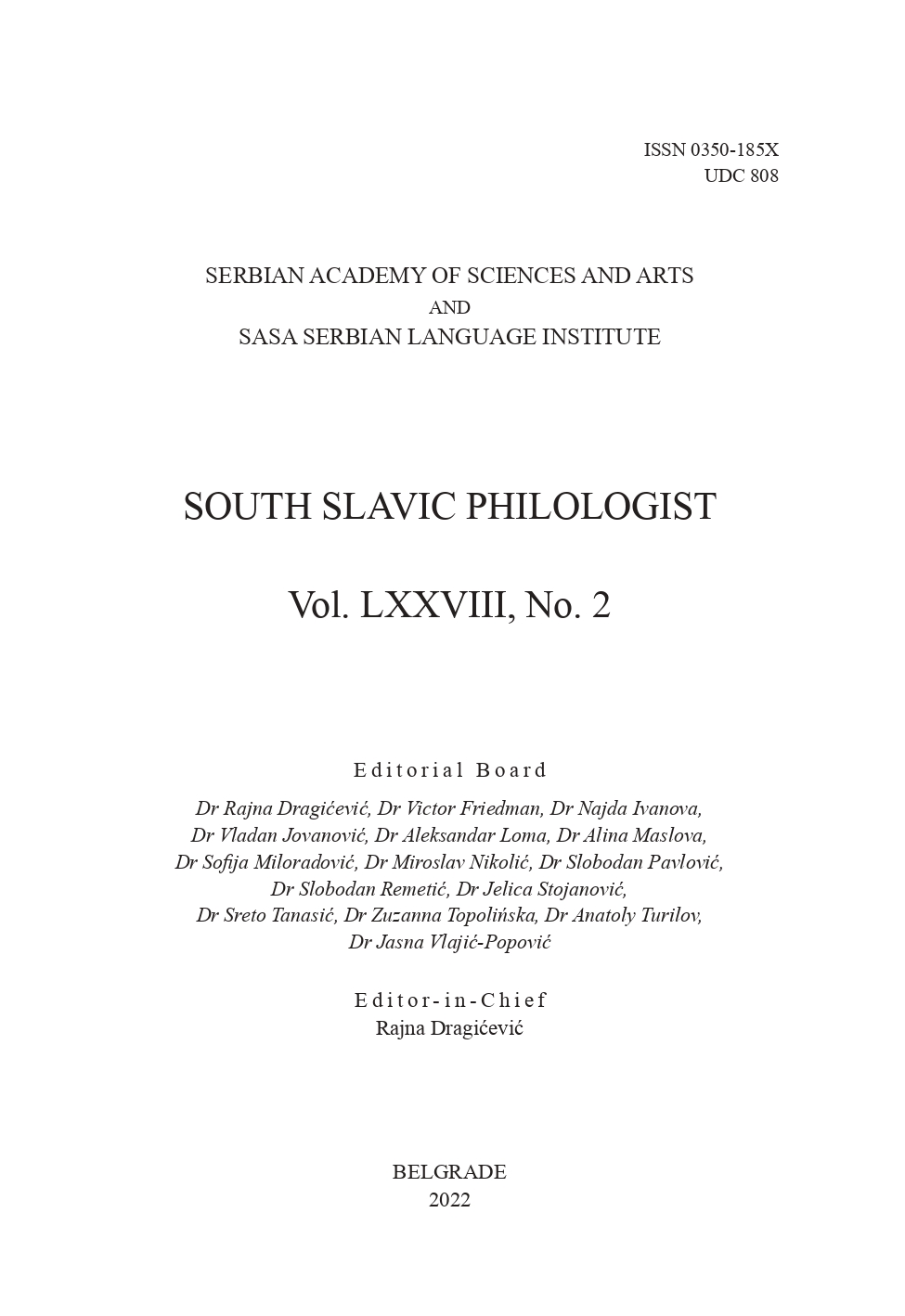ИЗ СТАРОСРПСКЕ МЕТАЛУРШКЕ ТЕРМИНОЛОГИЈЕ: БЛИЗНИЦА
ON OLD SERBIAN METALLURGICAL TERMS: BLIZNICA
Author(s): Aleksandar LomaSubject(s): Lexis, Semantics, Historical Linguistics
Published by: Институт за српски језик Српске академије наука и уметности
Keywords: Old Serbian language; metallurgical terms; Germanisms
Summary/Abstract: Old Serbian bliznica is attested around 1350 in a passage dealing with iron melting. Since the mid-1600s the word has been recorded by early lexicographers, glossing it as ‘steel’. Today bliznica and its shorter variant blizna are used in the same meaning by vernacular speakers of Eastern Serbia, Western Bulgaria and Macedonia, but formerly the word’s area extended far to the west, to Western Serbia, Bosnia and Dubrovnik. Although limited to a part of South Slavic, blizna, bliznica ‘steel’ is traditionally interpreted as an inherited word, going back to the PIE root *bh lei̭ĝ- ‘beat’, together with Lat. flīgere, Latv. bliêzt id., Lith. blyžė̃ ‘fl aw in fabric’, Common Slavic *blizna / *blizno id., also ‘scar, bruise’, *blizъ ‘near, close’, etc. Such a derivation and generally a prehistoric origin of the word in question seem doubtful. More probably, it was borrowed from the tongue of the “Saxons”, i.e. German mining experts who had come to Serbia in the 13th century. Presumably blizn- refl ects a Middle High German compound with īsen ‘iron’ as its head, preceded by blī ‘lead’, or perhaps by the verbal stem of blæ-en ‘blow’. In the former case, a variety of iron would have been named *blī-īsen > *blīsen, most probably after its leaden colour, and in the latter the denomination *blæ-īsen might be interpreted as a calque of Latin fl atum ferri, an iron mass produced by blowing bellows.
Journal: Јужнословенски филолог
- Issue Year: 78/2022
- Issue No: 2
- Page Range: 207-220
- Page Count: 14
- Language: Serbian

